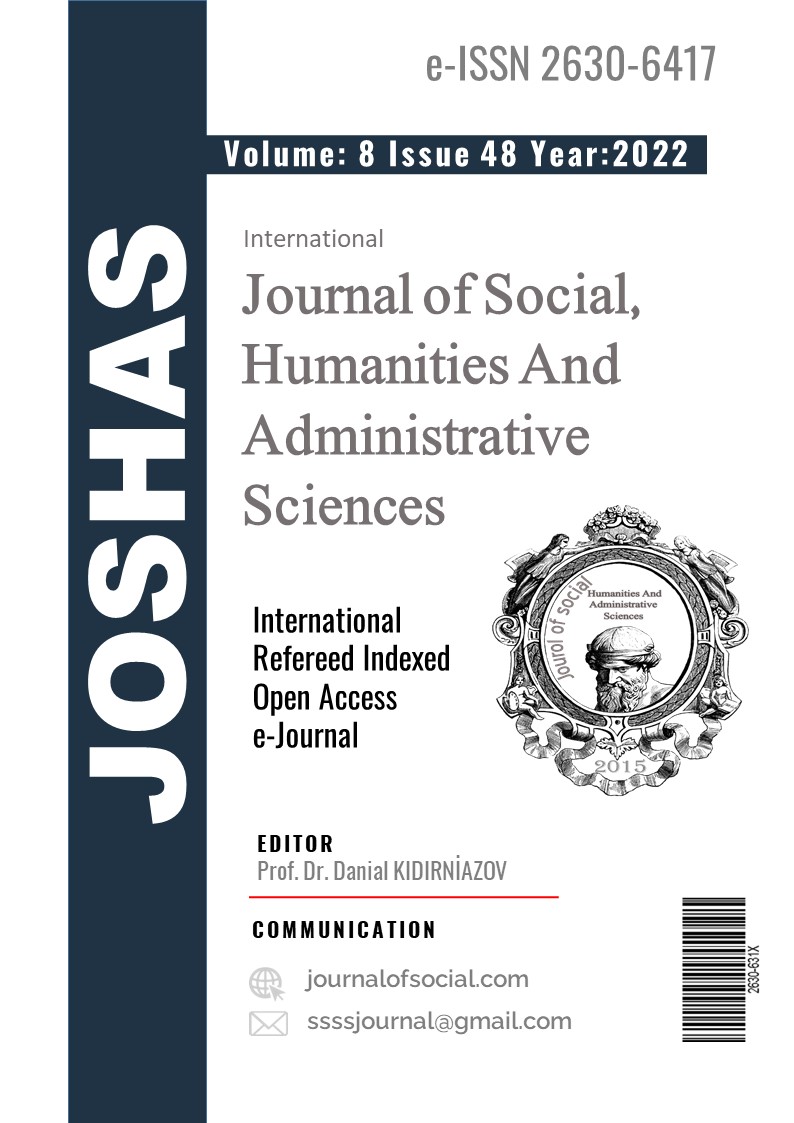Author :
Abstract
Kozmos kelimesi, Yunanca kökenlidir ve “düzen” manasına gelir. Eskiçağ Mezopotamya insanı da kelimenin bu bağlamdaki anlamından yola çıkarak, göğe baktığında gördüğü her bir göksel cismi bir düzen içinde görmüştür. Yazmış oldukları çivi yazılı metinlerden yola çıkarak başlangıçta bir kaos olduğu ve her zaman bu kaosa bir tanrının düzen getirdiği anlaşılır. Gökteki gözle görülen yedi gezegeni de kendi tanrılarıyla özdeşleştiren Eskiçağ Mezopotamya insanı, bu gezegenleri tanrılarıyla bir tutarak kişileştirmiştir. Çivi yazılı metinlerden yola çıkarak Eskiçağ Mezopotamya insanının göğü üç kısma ayırdığı görülür. Göğün en üst kısmında An/Anu, orta kısmında Bel/Marduk ve İgigi tanrıları, alt kısmında ise insanların gözle görebildiği yıldızlar oturmaktaydı. Göğün bu katlarının her birini, kendilerince kutsal sayılan taşlar ve taşların renkleriyle temsil ederlerdi. Bununla da kalmayan Eskiçağ Mezopotamya insanı, yeryüzünü de üç kısma ayırarak en üst kısma insanoğlunun ruhlarını, orta kısma Apsu ve sonradan onun yerini alacak olan Ea’yı, en alt kısma ise Annunaki tanrıları ve Nergal’i koydukları görülüyor.
Keywords
Abstract
The word cosmos means "order" in Greek. Ancient Mesopotamian people, starting from the meaning of the word in this context, saw every celestial body they saw in an order when they looked at the sky. Based on the cuneiform texts they wrote, it is understood that there was chaos in the beginning and a god always brought order to this chaos. The ancient Mesopotamian people, who identified the seven visible planets in the sky with their gods, personified these planets by equating them with their gods. Based on the cuneiform texts, it is seen that the Ancient Mesopotamian people divided the sky into three parts. In the upper part of the sky An/Anu sat, in the middle part the gods Bel/Marduk and Igigi, and in the lower part the stars that people could see were seated. They represented each of these layers of the sky with the stones and the colors of the stones considered sacred to them. Not only that, the Ancient Mesopotamian people also divided the earth into three parts, and it is seen that they put the souls of human beings at the top, Apsu or Ea in the middle part, and the Annunaki gods and Nergal in the lowest part.
Keywords
- Alomia, K. Merling. 1987. “Lesser Gods of the Ancient Near East and Some Comparisons With Heavenly Beings of
- Alomia, K. Merling. 1987. “Lesser Gods of the Ancient Near East and Some Comparisons With Heavenly Beings of the Old Testament”. Andrews University.
- Black, J. & Anthony, G. 2003. Mezopotamya Mitolojisi Sözlüğü: Tanrılar İfritler Semboller, Aram Yayıncılık,Gadotti, A. 2014. Gilgamesh, Enkidu and the Netherworld and the Sumerian Gilgamesh Cycle, De Gruyter, Berlin.Frankford, H.A.; Wilson, J.A. Jacobsen, T. & Irwın, W.A. 1946. The Intellectual Adventure of Ancient Man: An Essay on Speculative Thought in the Ancient Near East, The Universtiy of Chicago Press, Chicago.
- Heidel, A. 1951. The Babylonian Genesis: The Story of Creation, The Universtiy of Chicago Press, Chicago. Horowitz, W. 1998. Mesopotamian Cosmic Geography, Eisenbrauns, Winona Lake Indiana.
- Jacobsen, T. 1987. The Harps That Once: Sumerian Poetry in Translatzon, Yale University Press, New Haven and London.
- King, L.W. 2004. Enuma Elish:The Seven Tablets Of Creation: The Babylonian And Assyrian Legends ConcerningThe Creation Of The World And Of Mankind Vol 1, Kessinger Publishing, Montana.
- Lambert, W.G. 1975. “The Cosmology of Sumer and Babylon”. (Ed. Carmen Blacker ve Michael Loewe), Ancient Cosmologies, ss. 42–65, George Allen & Unvin Ltd, London.
- Lambert, W.G. 2013. Babylonian Creation Myths. Eisenbrauns, Winona Lake Indiana.
- Mateus, M.J. 2009. “Directionality and Geography in Mesopotamian Astral Omens”, Yüksek Lisans Tezi, Faculty of Kepler College, Washington.
- Rochberg, F. 2005. “Mesopotamian Cosmology”. (Ed. Daniel Snell), A Companion To The Ancient Near East, ss. 316–329, Blackwell Publishing, Malden USA.
- Sitchin, Z. 2001. 12. Gezegen: Dnya Tarihçesinin İlk Kitabı (Çev.: YaseminTokatlı), Ruh ve Madde Yayınları,Wiggerman, F. 1992. “Mytholocigal Foundation of Nature”. (Ed. Diederik Meijer), Natural Phenomena: TheirMeaning, Depiction and Description in the Ancient Near East, ss. 279–306, Nederlandse Akademie van Wetenschappen, Amsterdam.
- Wright, M.R. 1995. Cosmos in Antiquity, Routledge Press, London and New York.
- Yıldırım, E. 2016. “İnsanlığın Metafiziksel Kozmoloji Anlayışında Mezopotamya Mitolojisinin Sahip Olduğu Evren Algılayışının Etkisi”. MSKU Eğitim Fakltesi Dergisi 3(SI): 18–27.
- Yonar, G. 2015. Yaratılış Mitolojileri, Ötüken Yayınları, İstanbul.
